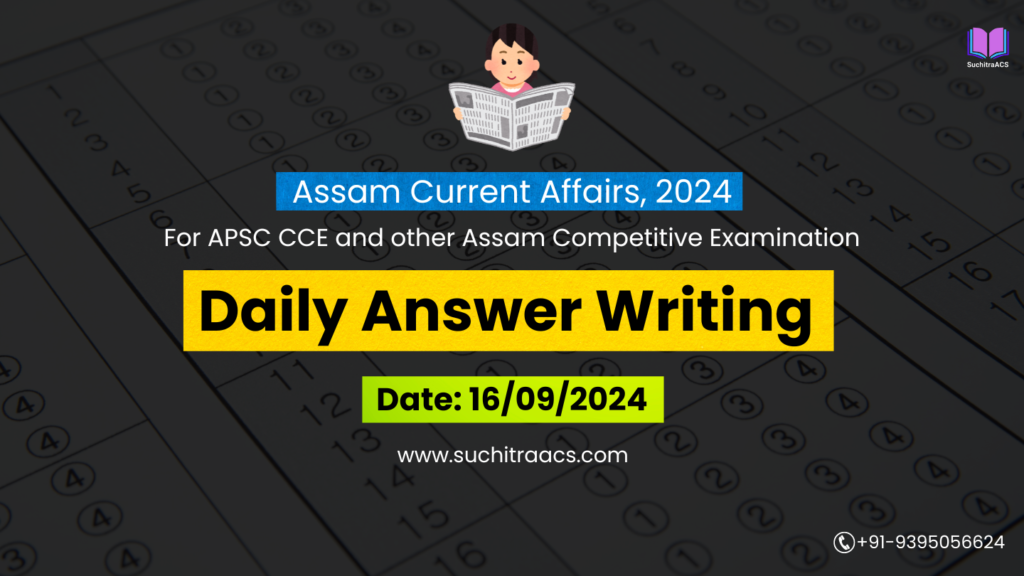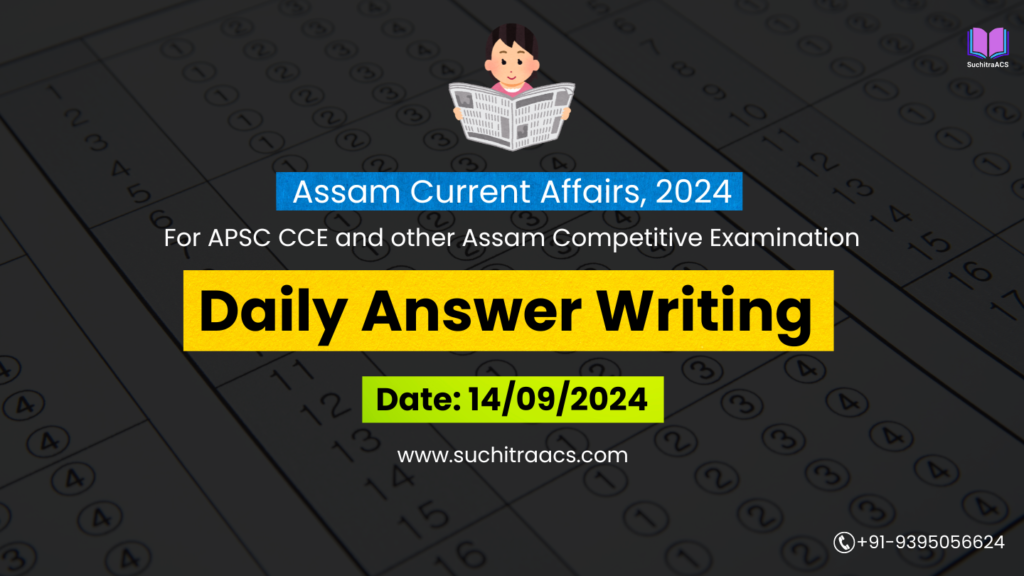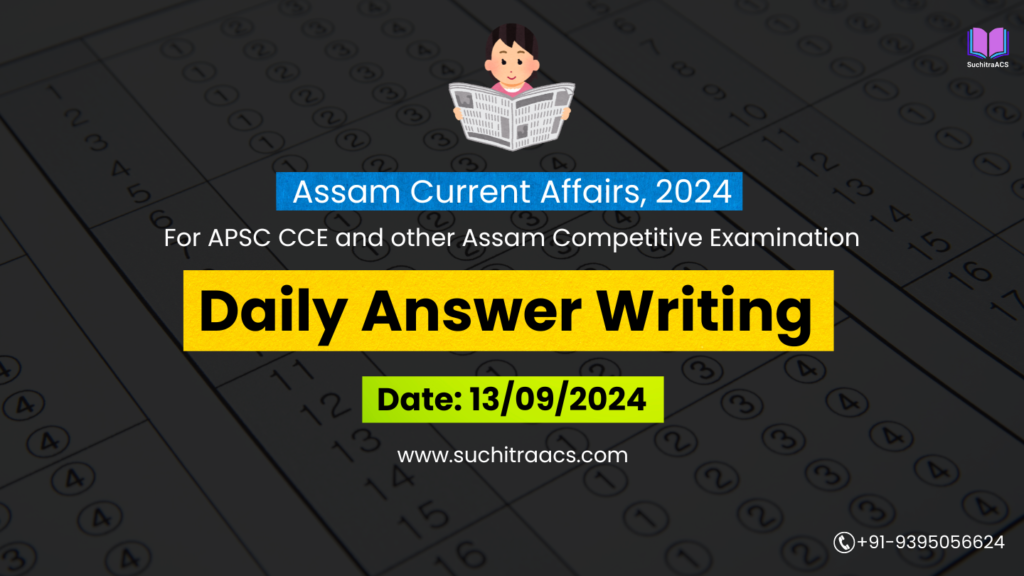APSC Answer Writing (Daily) based on Assam Tribune – 17/12/2024
For APSC CCE and other Assam Competitive examinations aspirants, practicing Daily Answer Writing is vital. This blog covers the most important Main question and its model Answer from the Assam Tribune today (17-12-2024).
Mains Question
Q. Recurring floods and river erosion pose a significant developmental challenge in Assam. Examine the impact of these issues on the state’s economy, environment, and society. Suggest long-term structural and non-structural measures to mitigate their effects. (15M)
Model Answer
Introduction
Assam’s geographical location in the Brahmaputra and Barak river basins makes it prone to severe floods and erosion. Annually, nearly 40% of Assam’s landmass faces flooding, leading to widespread displacement, loss of livelihood, and environmental degradation.
Impact of Floods and River Erosion in Assam
- Economic Impact:
- Agriculture Loss: 2-3 lakh hectares of cropland are affected annually, reducing yields and incomes for farmers.
- Infrastructure Damage: Roads, bridges, and embankments are frequently damaged, increasing repair costs.
- Livelihood Disruption: Floods displace thousands, disrupting economic activities like farming, fishing, and trade.
- Environmental Impact:
- Erosion: The Brahmaputra erodes 8,000 hectares of land annually, shrinking riverine islands like Majuli.
- Biodiversity Threat: Floods impact wildlife habitats in Kaziranga National Park, displacing animals and causing human-wildlife conflict.
- Sedimentation: Excessive deposition of silt reduces river capacity, intensifying future floods.
- Social Impact:
- Displacement: Over 2 million people are displaced annually, leading to loss of homes and livelihoods.
- Health Issues: Contaminated water during floods leads to the spread of waterborne diseases like cholera and dysentery.
- Education Disruption: Flood-affected schools often remain closed for weeks, impacting learning outcomes.
Structural and Non-Structural Measures for Mitigation
Structural Measures:
- Strengthening Embankments:
- Use of geo-synthetic materials to reinforce embankments for long-term durability.
- Construction of Flood Shelters:
- Build elevated multi-purpose shelters for displaced people and livestock.
- Dredging of Rivers:
- Periodic dredging of the Brahmaputra to increase water-carrying capacity.
- Highlands in Protected Areas:
- Develop elevated highlands in flood-prone wildlife areas like Kaziranga for animal refuge.
Non-Structural Measures:
- Early Warning Systems:
- Use of satellite imagery and real-time data for accurate flood prediction and community alerts.
- River Management Policies:
- Implement the Brahmaputra River Management Plan to manage sedimentation and flow dynamics.
- Afforestation and Soil Conservation:
- Plant trees along riverbanks to prevent erosion and stabilize the soil.
- Community Awareness:
- Educate local communities on flood preparedness, disaster resilience, and adaptive farming techniques.
Conclusion Assam’s flood and erosion crisis requires a multi-pronged approach combining technology, infrastructure, and community participation. By implementing structural solutions alongside non-structural measures like policy reform and capacity building, Assam can reduce the recurring damage and foster long-term resilience, aligning with SDG 13 (Climate Action) and SDG 15 (Life on Land).
✨ Looking for top-quality APSC Mains Guidance with Personalised Mentor?

🔔 Join Our WhatsApp Study Group!
For exclusive access to premium quality content, including study materials, current affairs, MCQs, and model answers for APSC CCE and other Assam competitive exams.
Click here to join: SuchitraACS Study WhatsApp Group
📚 Want to know more about SuchitraACS’s most affordable courses?
Click here to know more: SuchitraACS Courses for APSC CCE and Assam Competitive Examinations




